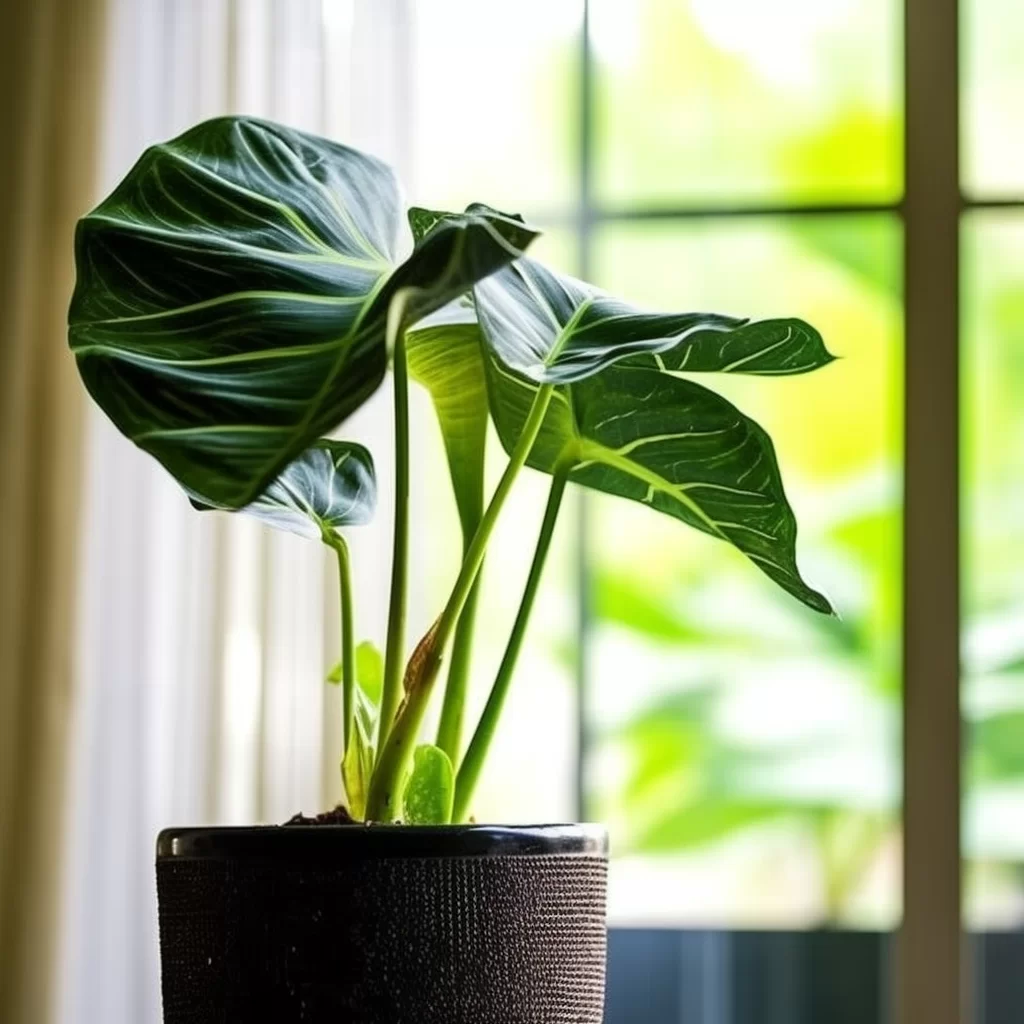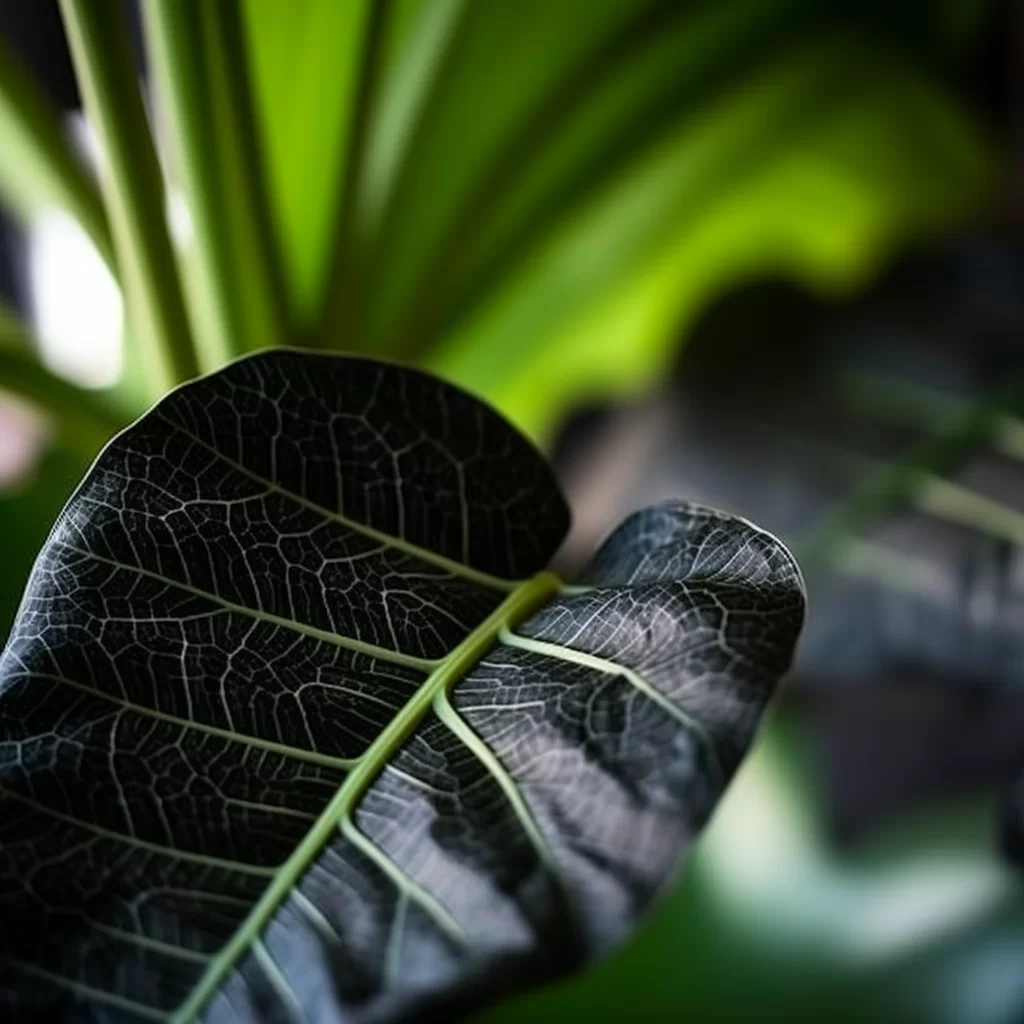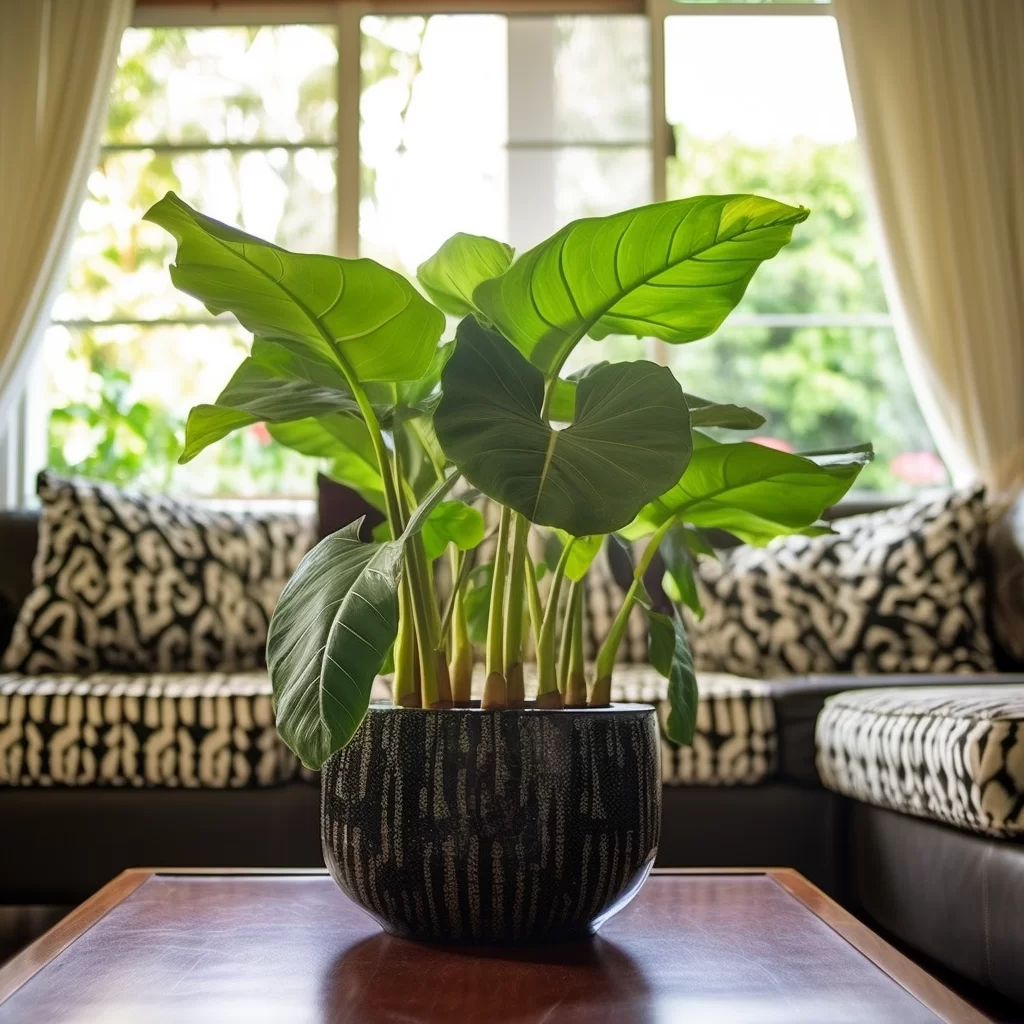Story of Day :
Contents
Black Alocasia Plant: Complete Guide and Care Tips
Introduction
If you’re looking for an unusual plant to add to your garden, the black alocasia might be just what you need.
This unique plant has dark purple leaves that are almost black, making it stand out from other plants in your collection.
In this guide, we’ll give you all the information you need to know about growing and caring for a black alocasia.
The Basics of Black Alocasia Plants
The black alocasia is also known as the elephant’s ear plant because of its large, heart-shaped leaves.
It’s native to tropical regions in Asia and is often grown as an ornamental houseplant or outdoor garden plant.
- The scientific name for the black alocasia is Alocasia Wentii.
- The leaves of the black alocasia can grow up to three feet long and two feet wide.
- This plant can grow up to six feet tall when planted outdoors in warmer regions with full sun or partial shade exposure.
- It prefers well-drained soil that is rich in organic matter and requires regular watering during its growing season.
Growing Black Alocasias Indoors
If you plan on growing your black alocasia indoors, there are some specific considerations to keep in mind:
Lighting Requirements:
Adequate lighting is crucial for indoor growth; indirect bright light/sunlight should suffice.
Don’t place it under direct sunlight as it can scorch easily due to high heat levels; however, don’t position it too far away from natural light either – find that sweet spot where its foliage remains healthy.

Soil Requirements:
Black alocasia prefers a well-draining soil mixture that comprises of coco coir, perlite, and peat moss in equal proportions.
Watering Requirements:
The general rule of thumb is to keep the soil moist but not waterlogged.
Overwatering can lead to root rot, so it’s best to be careful with this plant and only water it when the top inch of soil is dry.
Growing Black Alocasias Outdoors
If you live in a warm climate region where temperatures stay above 60 degrees Fahrenheit year-round, you can consider growing black alocasias outdoors.
Here are some tips for outdoor growth:
Lighting Requirements:
The black alocasia needs full sun exposure or partial shade depending on your region’s weather conditions.
Indirect sunlight would suffice if planting it in an area where sun exposure is too harsh.

Soil Requirements:
This plant requires well-drained soil rich in organic matter, which means that adding compost or leaf mold will help keep the soil moist during hot spells while also providing essential nutrients for healthy growth.
Disease Prevention Measures:
To prevent fungal diseases like root rot from affecting the plants’ growth outdoors due to excess rainfall or moisture levels during summer months – avoid watering them frequently and use organic fungicides/fertilizers instead as part of your maintenance routine.
- Add garden lime at least once per year to maintain optimal pH levels; this helps with nutrient uptake by roots,
- Fertilize regularly with balanced fertlizers containing nitrogen (N), phosphorus (P), potassium (K), etc.,
- Keep weeds away from the plant’s base to prevent competition for nutrients and water.
Conclusion
Growing a black alocasia plant can be an enjoyable experience for both indoor and outdoor gardeners.
By providing the right care, you can help this unique plant thrive and make an impressive statement in your garden or home.
Remember to keep adequate moisture levels while avoiding overwatering, use well-draining soil rich in organic matter that’s fertilized regularly with balanced fertilizers containing essential nutrients like N-P-K.
With these tips in mind, you’re sure to have success growing your black alocasia!
